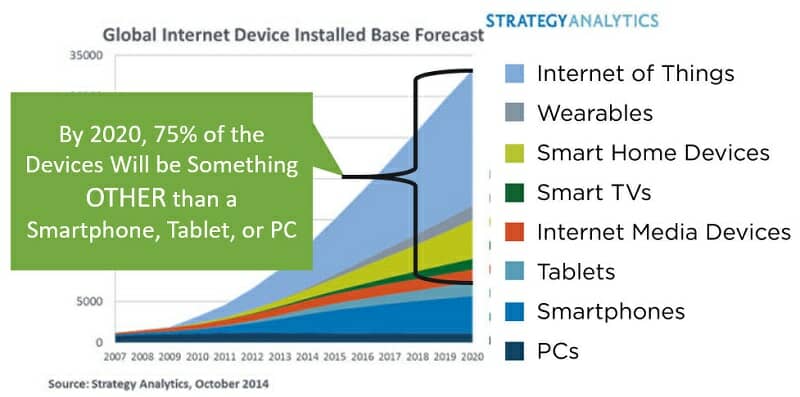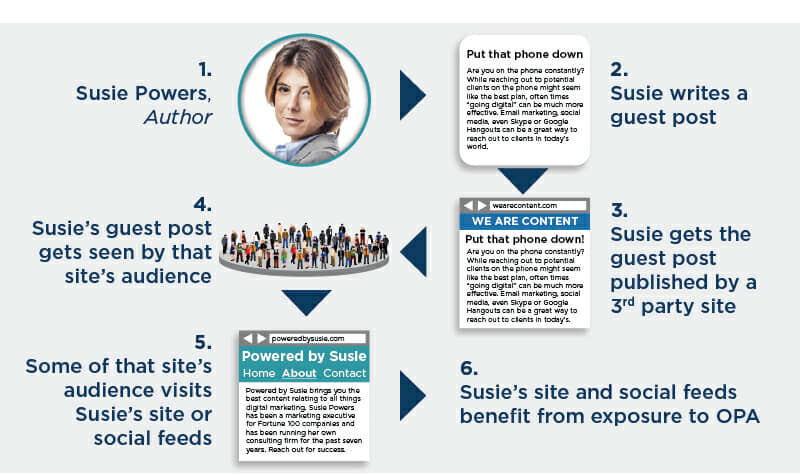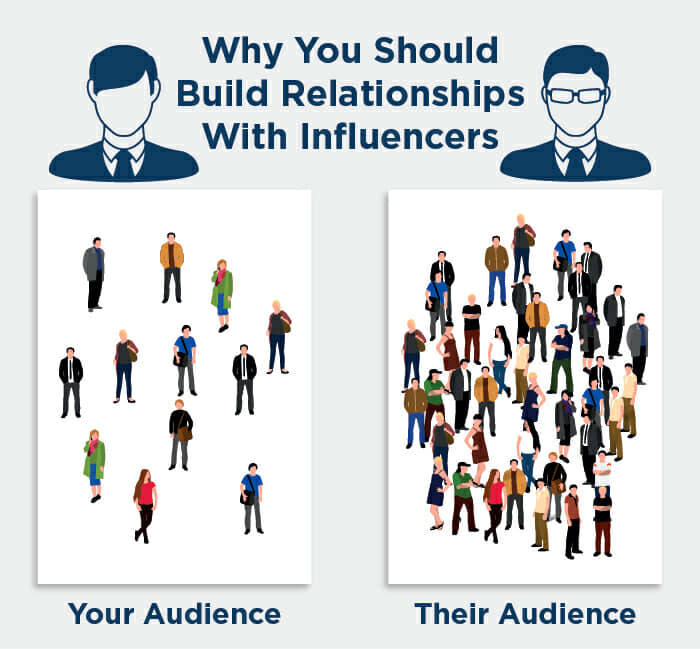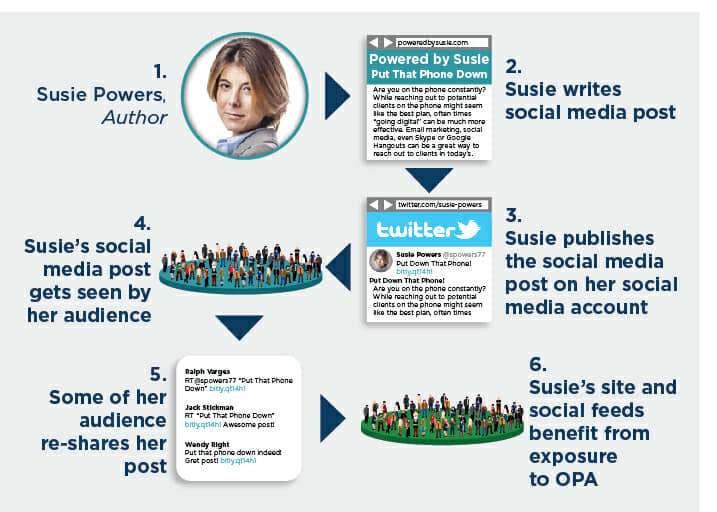We live in an era when technology is evolving extremely rapidly. Machine learning, voice processing, personal assistants, the Internet of Things, virtual reality and augmented reality are all advancing quickly, and the next big era of disruptive change will likely be unfolding soon.
How will you protect your business when the next major era of market disruption comes upon us? More importantly, how will you set it up to thrive?
The Basic Goal: Build Your Own Passionate Audience
[Tweet “Building your own passionate audience should be a key goal for any business. Find out how at”]
Doing so will provide you with a strong defense against major market changes.
Imagine for a moment that search as we know it goes away. Never happen, you think? Well, think again.
In a few years, you can expect that 75 percent of all Internet-connected devices will be something other than a smartphone, tablet or PC.

In this world, you likely won’t have search boxes or browsers. Some new approach will need to take its place. For now, I’ll call this the “Find What I Want Method.”
How do you rank in that new algorithm? You don’t know yet, of course! Or, do you? What if you had a large, passionate following for your products or services? What would happen if you had such an audience, and you were not being surfaced by the Find What I Want Method?
[Tweet “Your best defense in a changing digital marketing landscape is a passionate audience – Eric Enge”]
Your passionate audience would be disappointed by the Find What I Want Method, and would continue to use other approaches to gaining access to your products and services. And just as Google has to do today, the companies behind the Find What I Want Method would receive strong signals of a shortcoming in their product, by losing some market share in the process.
They’ll want to fix that. Even if that is not something they will work on fixing quickly, you’ll still have bought some time to better optimize your business for success within the Find What I Want Method.
Bottom line: Having your own passionate audience is critical for long-term business stability and is a major driver of opportunities for growth. So for now, focus on building a large following of people who love what you do!
However, unless you’re already a well-known public figure, building your own audience can be time-consuming and arduous, and can often feel like an uphill battle. So, how should you approach the challenge? The answer is simple: Leverage other people’s audiences (OPA).
Why OPA?
When your brand first makes its online debut, it will be relatively unknown. Audience members may begin to trickle in one by one, but you’ll want to find a way to turn that trickle into a downpour.
Luckily, chances are there are other sites in the same niche sector as yours that already have established audiences. By leveraging the power of those pre-built audiences, you’ll be able to speed up your own audience-building process, target the demographics most relevant to you, and make potentially beneficial connections with influencers, media sites, and other non-competing brands.
Here are four ways you can harness the power of OPA:
1. Publish Guest Posts

And, yes, Google does periodically warn people about manipulative guest posting campaigns, but our objectives here are centered first on reputation and visibility building, and there is no problem at all with those types of campaigns.
2. Build Relationships with Influencers
You probably already know who the industry leaders in your niche are—and if you don’t, take the time to find out. Finding ways to collaborate with them could prove to be a major boon for your brand.
Try to build a relationship with them first. Commenting on their social media posts, or on blog posts they write, is a fantastic way to do this. If they ask a question online somewhere, be the first to answer it.
Another great tactic is to ask them for an interview. This works best after they already know you a bit (see the prior paragraph), but it’s rarely a request that will cause someone to get offended. Once you’ve landed an interview, post the finished piece on your own blog and promote it on social media, and they will likely promote it as well.

You don’t have to limit this to doing interviews. Find other ways to work with them. Perhaps you can get them to provide quotes for articles you write on your blog or in guest posts you place on other sites. Or, once your relationship is stronger, perhaps you can get them to write a guest post for your blog.
You can also explore social media collaborations with them. For example, what if you paid them to share your content via their social profiles? This might not cost that much, and that can provide great exposure for you to their audience as well.
3. Get Social
There’s a reason that social media isn’t called solitary media. Platforms like Twitter, Facebook and Instagram are full of active, niche conversations, and you can make them work to your advantage by chiming in with relevant and interesting comments. You don’t want to sound forced or disingenuous, but you should make sure that your brand and a link to your website are clearly visible on all your social media profiles.
Using Twitter as an example (but the concept is the same on other social networks), part of the game is to tweet or retweet content that others will want to retweet. Once that retweet by someone else happens, you’re in front of their audience, and that’s a beautiful thing.

Don’t overlook paid social, either. Targeting on social media platforms can be amazing, with Facebook still leading the way here. Be careful about the targeting, though: It’s not always about reaching large audiences when implementing paid social. Sometimes the best campaigns are highly targeted.
4. Create Compelling Content on Your Site
You might think that publishing content on your site might not provide access to OPA, but it absolutely can. In fact, it plays a critical role.
Accessing OPA is one thing. Providing OPA with a compelling experience once they get to your site so they stick around and come back is another. At Perficient Digital, we’re known for our stream of industry research that we publish, and that has helped us build our own strong audience. Consider publishing your own groundbreaking content, studies or otherwise, that people will want to flock to.
Just be aware that you will need to be patient with this process. When you first publish fantastic content on your site, it may be that few will see it. But, you need to start publishing there to create that destination for the OPA you get in front of. In the long term, this can lead to much more success in all of the prior areas I’ve written about. For example:
- Media people will want to interview you
- Media sites will want you to write for them
- Conference organizers will want you to speak at their events
- Influencers will be more open to working with you
- Your social media efforts will have a larger impact (both organic and paid)
Of course, this all depends on understanding what compelling content really is and learning how to create it.
Create the Right Content
Figuring how to reach OPA and keep their interest is not the whole equation, however—you need to be creating the right content to make this work.
It goes without saying that all your content, whether it’s in the form of a guest post, an interview or a comment on social media, should be well-written and carefully edited. When you’re creating content, resist the urge to simply rewrite someone else’s thoughts and really take the time to articulate your own unique perspective.
The content you create is being used to build your own audience. For that reason, it needs to be great. Otherwise, all your efforts to get in front of OPA will be wasted, and in fact, it could have the negative effect of showing you to be a pretender, rather than the real deal. Make sure to bring real value in everything you write!
By writing original, polished guest posts on other people’s websites, working with other thought leaders, getting engaged on social media, and offering compelling content, you’ll be taking the first step toward building an audience of your own and possibly even becoming recognized as a thought leader yourself.
Building an Effective OPA Strategy
Before you start contacting other brands and businesses, you’ll need to form a clear-cut OPA strategy.
Each business has its own unique needs and areas of focus, which is why some OPA strategies that work wonderfully for other brands will work poorly for yours. To build an OPA strategy that’s tailored to your brand’s needs, begin by considering the following criteria:
Size
In the world of digital marketing, one size does not fit all. A small, focused audience might be ideal for one brand, while a large, widely dispersed audience might be better suited for another. If the OPA you’re eyeing doesn’t meet any criteria other than size, you might want to reconsider. You need your audience to be highly relevant to your business, and you want it to have a strong contingent of potential customers (see the next point!).
Relevance
Exposure isn’t worth much if you’re not relevant to the people who see you. For this reason, you’ll want to stay away from any OPA that veers too far from the topics your brand addresses. For example, you can get tons of visibility in social media with the right cute animal or baby pictures, but that might not bring any real value to your business.
Quality of Existing Content
Just as other media sites wouldn’t want you to publish sloppy or poorly written guest posts on their website, you don’t want to associate yourself with media sites that consistently put out sub-par content, either. Make sure you’re ending up in “good neighborhoods.” Better still, make sure you’re ending up in the best neighborhoods.
Authority
Bringing visibility to your brand will become a whole lot easier once you’re able to work with venues whose authority is recognized in your field. Whether a high-profile industry leader, an important conference or a trusted news site, the right venue can make all the difference.
Feasibility
You might be tempted to agree to every offer you get, but you must also take your own capacity into consideration. If a venue mandates that you write at least four guest posts in the next month but you only have the time to write one, don’t agree to their proposal without thinking twice. Sometimes an opportunity just won’t be feasible, and that’s okay.
Opportunism
Take a breath and put yourself out there. This is the most fundamental criterion of any OPA strategy because it’s the one that jump-starts your audience-building process most effectively. Engage in your industry’s community, reach out to people and don’t be shy.
As you get engaged, watch for the right opportunities. Notice when an influencer asks a question or looks like they’re seeking help. Track when a conference calls for speaker pitches. Keep your eye out for bloggers and media sites that appear to suddenly have a need. If it’s the right opportunity, jump on it when it happens.
Strive for Authenticity
Given the nature of the process of building your own audience, it’s important to be as genuine and authentic as you can at all times. An endorsement that seems phony will not only fail to be as effective as a genuine one but might also backfire and lead consumers to think negatively of your brand.
Continuity
Leveraging OPA is not a one-time thing or something you only do when you’re small and trying to grow. You should always be trying to grow, and that means you need to stay at it for the long term.

Even as your audience grows, sites and people with OPA will not overlap perfectly with you. And, even if there is substantial overlap, having others endorse your expertise and authority is very, very helpful.
Summary
Building your own passionate audience is a critical pursuit for your business. Nothing will help you weather stormy business times, or radical market change, better than that.
However, the great majority of us are forced to start small. That means you have to start by building that audience. Gaining access to OPA is one of the best ways to do that. An organized OPA strategy could be the big key to building your audience quickly and effectively. There’s no time like the present to get started!



Read and re-read this post several times. It’s invaluable, especially in getting people to think beyond their owned properties and in helping them see the necessity of taking a long-term, holistic view.